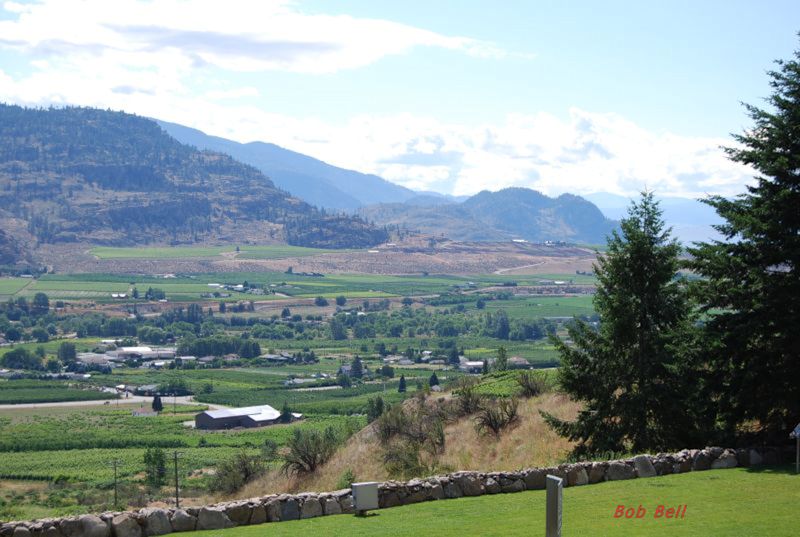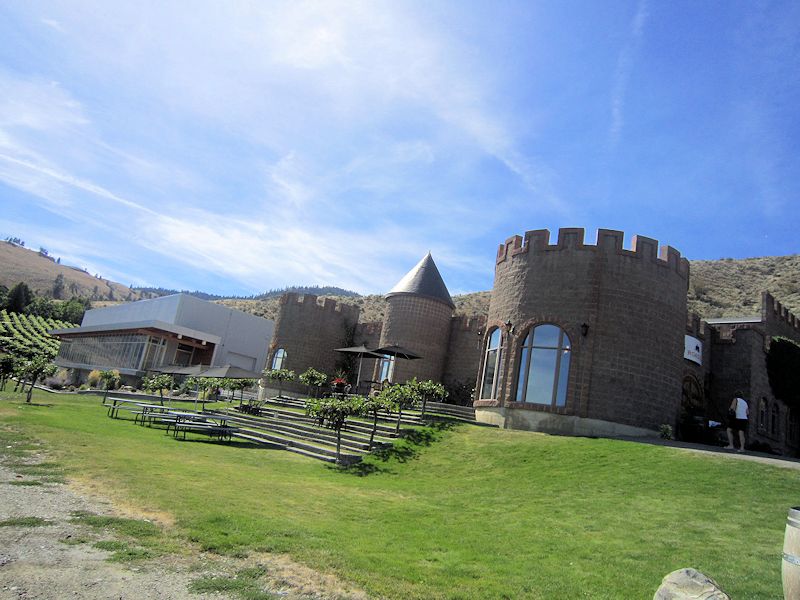Robert Bell's
Wines of Canada
Since 1992
The Golden Mile

The Okanagan Golden Mile
The Golden Mile
Unique and oh so beautiful, British Columbia's Golden Mile an area located in the Southern Okanagan region. Today the Golden Mile is known for its wines the land is dotted by wineries and covered with vineyards. The Golden Mile sub region lies south of Oliver on an east-facing bench backed by gentle mountains.
The sub region begins just south of Oliver at Fairview and extend southward to the3502 Fruitvale Way where Gold Hills winery is located. It is said that the Golden Mile was given its name because of its location, geography and resulting temperatures and ideal growing conditions. The Golden Mile is located off the Valley floor in the upper bench. This is particularly important when there is a fall frost as it is less likely to reach, and therefore damage, plants in the area. This makes it ideal for ground cropping as the positioning allows for additional warmth from the rocks, which benefits the crops and lengthens the growing seasonThe temperature in the Golden Mile can be six to eight degrees warmer than what is found along Highway 97 at the bottom of the valley. This was critical in the early years for the area wineries because of frost. Vines cannot be exposed to early or severe frost – the leaves turn brown, photosynthesis and ripening stop, and the plan is easily wounded and even killed. Past years have seen a distinct temperature shift and the lower-lying areas along Highway 97 are significantly warmer than in past decades. But traditionally, grape crops needed to count on a longer, warmer season through mid to late October for crops to properly ripen. This can be relied upon in the Golden Mile.
The first commercial vineyard was planted in 1969 by Joe Bisnardo, who currently owns Divino Estate Winery on Vancouver Island
Early Development History **
The rich history of the area dates back to 1918 when the Southern Okanagan Lands Project was established following the passage of the Soldiers Land Act. Up until that point most of the activity in the region centred on an area four kilometers west of Oliver called Fairview. This old gold mine community dating back to the 1880s was created to work on the Stemwinder, Smuggler, Joe Dandy, Strathyne, Susie, Tinhorn and Wide West claims.
The Soldiers Land Act was spearheaded under Liberal Party Premier John Oliver and his Minister of Lands, T. D. (Duff) Pattullo. Known as “Honest John,” Oliver was a simple man of considerable integrity. He governed BC through some difficult times, including the readjustments after World War I and the economic depression of the early 1920s.
The “Act” was a priority for Honest John as it permitted the British Columbia government to purchase 22,000 acres of land from the Southern Okanagan Land Company for use as a soldier settlement to accommodate returning veterans from WWI. The settlement scheme included the establishment of a town site (appropriately named “Oliver”); the subdivision and sale or lease of lots in the region; and the construction of an open-canal gravity irrigation system, completed in 1927, stretching from a dam at the outlet of Vaseux Lake to the Canada/USA border.
To get the canal from the east side of the Valley to the benches on the west – known today as the Golden Mile – a 1,940 foot (591 m) long, six-and-a-half-foot (2 m) diameter wood-stave pipe was constructed that ran directly beneath the centre of Oliver. This water main, combined with the arrival of electricity from the West Kootenay Power and Light Company in 1922, meant that canal and river waters could be pumped up onto the Valley's benches. The 23-mile (37 km) long canal turned what was previously cattle ranging land into a lush ground crop and fruit-growing region that dwarfed what was occurring elsewhere in the province. The importance of this canal and irrigation system to the transformation of this region cannot be overstated.
On May 24, 1923, the first train arrived in Oliver. A few months later the first cantaloupes were sold and the response was so overwhelming that 44 carloads were put on the market the next season. The region thrived until the 1930s when activities slowed down because of the hard economic times. In 1935 and 1936 a small boom occurred in mining with the reopening of the Morning Star at Fairview, and in the lumber industry with the opening of a small sawmill.
With water added to the region's bounty of sunshine, Oliver grew in population between 1926 and 1936, from 500 to 1800, and became a prosperous community centred on agricultural abundance. Ultimately the canal irrigation system that was constructed between 1918 and 1927 was handed over to the citizens of Oliver and Osoyoos in 1990.
According to archived records, the first lot in the new development was sold to D. P. Simpson on March 4, 1921, followed by F. W. Nesbitt and C. Leighton. George Mabee, John Burns and Guy P. Bagnall bought the first lots south of town. These men all planted orchards the same year. They formed the Oliver Produce Association with H. Earle, the first president, and joined with the Oliver Cooperative Association in 1923.
Another reason for the name Golden Mile comes from the 19th century gold and silver mines. Tinhorn Creek is named after Tin Horn Creek Quartz a mining company that once owned the land.

At one time there was a winery named Golden Mile Cellars The winery was designed to look like a castle. Peter and Helga Serwo purchased the winery site in 1985. The Serwos were responsible for a good chunk of the early Golden Mile plantings including the original Tinhorn Creek site. Pam and Mick Luckhurst purchased in the land and winery in 2003. In 2008 they decided the name Golden belonged to the sub region and all the winemakers of the Golden Mile. They renamed their winery Road 13 Vineyard. Establishing the phrase "its all about the dirt"
Bill Eggert owner and winemaker who established Fairview Cellars in 1993 at the Golden Mile's northern tip says that wines made on the Golden Mile are often more complex than those grown on the sandy eastern side of the Valley. The Golden Mile has a good quantity of gravel in the soil allowing drainage and a good percentage of clay for retaining nutrients.*
A detailed description of the Golden Mile wineries can be found on the Okanagan Oliver page.
In 2014 the Golden Mile became the first sub-Designated Viticultural Area (or sub-Geographical Indication) of the Okanagan Valley DVA. It does not include all of the wineries around Oliver.
Wineries in and around Oliver
* The Wineries of British Columbia by John Schreiner
** Thanks to Road 13 Vineyards Winery for the history
Home | Sitemap | Advertise | Contact | About | Wineries | New ©2019 Robert Bell